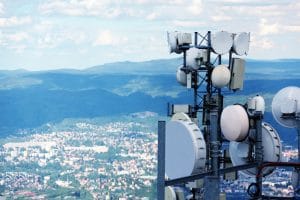COAI, the apex industry body representing the major Telecom, Internet & Technology companies in the country, celebrates World Telecom and Information Society Day 2018 (WTD 2018) with a vision to build and foster a digitally-empowered nation. Aligned with the theme of 2018, ‘Enabling the positive use of Artificial Intelligence for All’, COAI firmly believes that India will be one of the fastest adopters of Artificial Intelligence (AI) based services.

On the occasion of WTISD 2018, COAI is thankful to the Ministry of Telecommunications for providing the continuous support to the telecom sector and its expansion to every nook and corner of the country and delivers uninterrupted connectivity till the last mile. Emphasising on the urgency of expanding digital literacy and capacity building, COAI pushed for requisite reforms in order to actualise the Hon’ble Prime Minister’s vision of Digital India.
Over INR 10.4 lakh crores have been invested so far by Telecom Service Providers (TSPs) in building a world class telecom infrastructure. More than 3 lakh Base Transceiver Stations (BTSs) were added in last one year taking the total count to approx. 17.64 lakh BTSs. The proliferation of telecom infrastructure in the rural and remote areas have upped efficient connectivity and improved usability of telecom services. TSPs had already established infrastructural blue-print for services ranging from 3G to 4G, now they are taking adequate measures to build the foundation for emerging technologies such as 5G, AI, IoT, M2M, etc.
With constantly shifting demands of the telecom ecosystem, a greater focus is being laid by Department of Telecommunications on the implementation of the Right of Way Policy at the State level. COAI welcomes the adoption of Right of Way (RoW) Rule 2016 by 6 States viz. Rajasthan, Haryana, Odisha, Maharashtra, Assam and Tripura.
Odisha Policy has also been adopted by the Department of Telecommunications as the ideal policy for implementation for all states across India being one of the most comprehensive tower policies. The rules mandate development of an electronic application process within one year of the roll-out of ROW rules, single clearance window for application, designation of nodal officers, and fast-tracking decision on RoW permission upto 60 days to enable swift deployment of new telecom infrastructure, thus significantly aiding to improve socio- economic growth.
The industry is also thankful to the Ministry of Defence (MoD) on notifying the policy for installation of telecom infrastructure in cantonment areas under the tri-services. The policy covers allotment of defence land on lease for static towers as well as permission to use land on a licence basis for placing cell towers on wheels, permitting use of rooftop in government and private buildings, including private land in military stations to registered infrastructure providers. This policy will help improve coverage gap and reduce call drops in and around military stations and cantonment areas.
COAI congratulates Department of Telecommunications (DoT) for introducing a detailed framework on the National Digital Communications Policy 2018 (NDCP 2018). It has been successful in identifying long pending concerns of the telecom industry. The draft policy has proposed to rationalise multiple taxes and levies including license fees, spectrum usage charges and the universal service obligation fund, GST etc. Apart from paving the way for the development of telecom and digital services in the country, it would also create 40 lakh new jobs, thereby providing a fillip to the skill-set improvement. The proposed investment of USD 100 billion in the communication industry will not only make communication services accessible to everyone, but also provide much needed relief to the industry. As another positive aspect in the telecom sector, COAI also welcomes TRAI’s recommendations on Ease of doing business and in-flight connectivity. If executed in conjunction to licensed service providers, it will provide a secure network and create a steady revenue stream for telcos and airlines alike. Mr. Rajan S. Mathews, Director General, COAI, said, “AI is a crucial enabler for achieving the national goals in the areas of healthcare, education and capacity building. With a positive ecosystem, driven by better connectivity and a financially robust sectoral health, AI will unveil possibilities hitherto unparalleled.”
“We are thankful to the Government of India and DoT for the unstinted support provided to the financially moribund telecom sector. With the release of draft National Digital Communications Policy 2018, India will be the forebearer for next generation technologies, which will provide the country a roadmap towards socio-economic progress. The draft’s comprehensiveness, focus and lucidness set clear strategies to propel India on the path of a global knowledge revolution. The NDCP 2018 recognises spectrum as a natural resource and therefore will ensure adequate availability, efficient usage and putting together a fair and transparent allocation method for service providers. Having taken cognizance of the steep cost of spectrum, the policy has also suggested for adopting optimal pricing to ensure sustainable and affordable access to digital communication. The final policy will give a final shape to guide the evolution of telecom industry in the country.” added Mr. Mathews. The Indian Mobile Congress (IMC) which was held in September 2017 and is now scheduled for 25th– 27th October 2018 is also showcasing to the world, the importance of the Indian
telecom industry and the attention it rightfully deserves. Once the economic backbone, the sector has emerged as one of the biggest growth drivers for the nation.





























